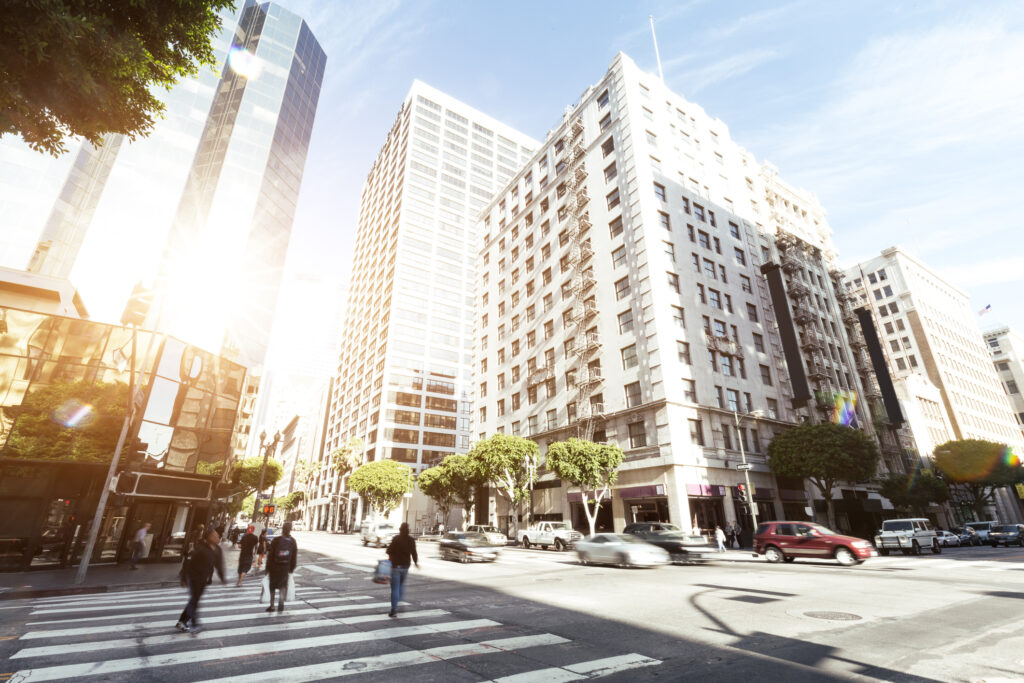The past few years have had the trending in commercial real estate at a crossroads. The pandemic, supply chain disruptions and other issues have significantly affected the sector’s operations. However, there is hope for investors, even as the landscape changes. What’s affecting the market heading into 2023? What spaces should people watch for heading into the next year? Here are the expected trends in real estate for 2023.
Download Printable Article (PDF) >>>

What’s Affecting Commercial Real Estate in 2023?
Outside forces have impacted the real estate market for nearly three years now. The global economy has been volatile since the pandemic, leading to uncertainty in the commercial real estate industry. These three factors have impacted real estate and will continue to influence the sector into 2023.
Interest Rates
The Federal Reserve’s interest rates were low at the pandemic’s beginning. The Fed cut them to cope with the pandemic. By mid-March 2020, interest rates were between 0 and 0.25%. However, the past year has seen them climb slowly as the Fed aims to curb the effects of inflation. At the beginning of 2022, investors could often find a 4% interest rate, promoting activity in the real estate market. However, the Fed has shifted gears dramatically. It projects that interest rates will climb around 5% to 5.5% into 2023. Interest rates will likely increase again next year, but the hikes shouldn’t be as dramatic as the 0.75% increases enacted in 2022. The hikes have affected the commercial real estate industry. More interest rate increases could cause lenders to stiffen their parameters for loans. These decisions will impact property values as the industry moves into 2023.
Inflation
Another factor affecting the commercial real estate industry is inflation. The United States and the rest of the world are experiencing the worst inflation in over 40 years. Before the pandemic, the U.S. saw inflation rates between 1% and 3%. Since 2022, that number has increased above 7% and has yet to come down. The good news is the inflation rates are slowing. In June 2022, it reached a peak of 9.06%. However, the inflation rate decreased by December to 7.11%, the lowest since November 2021. Inflation has had a profound impact on the commercial real estate industry. Rising inflation rates have caused construction, rent, operations and more expenses to increase. When rates rise, so do asset prices and mortgage rates. High interest and inflation rates will likely decrease demand in the industry.
Recession
The third factor affecting the commercial real estate industry is the prospect of another recession. The United States experienced The Great Recession from late 2007 into 2009. Then, in 2020, the economy faced a recession between February and April 2020, one of the shortest on record. However, another one could be on the horizon in 2023.
Inflation, interest rates and international conflict have set conditions ripe for another recession. The U.S. GDP declined for two quarters in 2022. Some experts are projecting the U.S. economy could enter a recession in the second or third quarter of 2023. This would bring increased unemployment and higher vacancies for commercial real estate. Property values will likely decrease, and pessimistic investors could open up the buyer pool in 2023.
What Investments Are Trending in 2023?
Despite interest rates and inflation, the commercial real estate industry remains as strong as it has in recent memory. As the pandemic wanes, the sector has remarkably recovered from early 2020. The looming problems have caused some investors to reevaluate their portfolios heading into 2023. These five spaces are excellent investment opportunities as the market changes.
1.Office Spaces
The pandemic changed many elements of commercial real estate and other industries. Since early 2020, many companies have let their employees work from home. Nearly three years later, many workers continue to do telework. Has the office space died? The old version may have, but new opportunities are on the horizon. The traditional office building has become less popular as employees work remotely. However, people work from places besides their homes, and some want the office feel. The solution for many has been co-working spaces. These buildings are an intriguing investment heading into 2023 because remote work is here to stay. Some studies project rapid growth for co-working facilities, increasing from 28,000 spaces in 2022 to 42,000 by 2024.
2.Storage Facilities
Another thing trending in commercial real estate to watch in 2023 is storage facilities. People working from home may need more space in their current residence to make room for an office. Some can do so, but others need a self-storage facility. Self-storage is a solid investment in commercial real estate because the demand remains steady. People need space to keep their extra belongings, whether creating a home office or moving houses. Self-storage provides easy revenue generation and tax insulation for investors as they see profits increase. Short-term leases allow owners to mitigate problems from uncooperative tenants.
3. Warehouses
The pandemic has affected how people work and shop. Strict pandemic protocols worldwide caused many businesses to close if the government deemed them nonessential. Therefore, people turned to online shopping if they wanted to order goods. This change has made warehouses a popular commercial real estate investment. Companies like Amazon have driven the boom in e commerce. The market has increased yearly since 2014 but has significantly boomed since 2020. Experts project e-commerce sales will eclipse the $8 billion mark by 2026. Increased demand has led to expansion in these warehouses, so there is still room to grow for this corner of real estate investment.
4. Repurposed Malls
The rise in e-commerce means the fall of the in-person shopping experience at places like malls. These facilities are still alive nationwide, but their decline is on the horizon. Consumers have found it’s more convenient to buy goods from home instead of commuting to a store. Some malls have closed, but cities and property owners have found ways to repurpose these facilities. Large structures provide a wealth of opportunities. According to an NAR survey, about 40% of real estate investors say they’ve transformed malls into mixed-use properties, incorporating office, retail and residential spaces into the same building. The rise of e-commerce will likely push this trend into 2023 and beyond.
5. Ghost Kitchens
Nowadays, people spend less time in shopping malls and restaurants. In-person dining decreased during the pandemic, and many started using delivery apps to bring their favorite foods to them. That trend has continued, even as the pandemic winds down. This has led to a rise in ghost kitchens. Ghost kitchens have become a popular investment because of their business model. They still cook the food onsite but have a leaner operation because they don’t have a dining room or servers. The overhead costs are lower, and ghost kitchens have more flexibility in their property choices because they require much less space than traditional restaurants.
Trending In Commercial Real Estate in 2023
Trends come and go in every industry, but the past few years have seen dramatic changes in commercial real estate. The pandemic, supply chain disruptions and interest rate hikes are only some of the factors affecting investors. However, there are still reasons to be optimistic amid the changes.
Rose Morrison is a residential and commercial real estate writer and the managing editor of Renovated. To see more of her work visit: https://renovated.com/



